Broad-Spectrum Antiviral Entry Inhibition by Interfacially Active Peptides
- PMID: 32907984
- PMCID: PMC7654261
- DOI: 10.1128/JVI.01682-20
Broad-Spectrum Antiviral Entry Inhibition by Interfacially Active Peptides
Abstract
Numerous peptides inhibit the entry of enveloped viruses into cells. Some of these peptides have been shown to inhibit multiple unrelated viruses. We have suggested that such broad-spectrum antiviral peptides share a property called interfacial activity; they are somewhat hydrophobic and amphipathic, with a propensity to interact with the interfacial zones of lipid bilayer membranes. In this study, we further tested the hypothesis that such interfacial activity is a correlate of broad-spectrum antiviral activity. In this study, several families of peptides, selected for the ability to partition into and disrupt membrane integrity but with no known antiviral activity, were tested for the ability to inhibit multiple diverse enveloped viruses. These include Lassa pseudovirus, influenza virus, dengue virus type 2, herpes simplex virus 1, and nonenveloped human adenovirus 5. Various families of interfacially active peptides caused potent inhibition of all enveloped viruses tested at low and submicromolar concentrations, well below the range in which they are toxic to mammalian cells. These membrane-active peptides block uptake and fusion with the host cell by rapidly and directly interacting with virions, destabilizing the viral envelope, and driving virus aggregation and/or intervirion envelope fusion. We speculate that the molecular characteristics shared by these peptides can be exploited to enable the design, optimization, or molecular evolution of novel broad-spectrum antiviral therapeutics.IMPORTANCE New classes of antiviral drugs are needed to treat the ever-changing viral disease landscape. Current antiviral drugs treat only a small number of viral diseases, leaving many patients with established or emerging infections to be treated solely with supportive care. Recent antiviral peptide research has produced numerous membrane-interacting peptides that inhibit diverse enveloped viruses in vitro and in vivo Peptide therapeutics are becoming more common, with over 60 FDA-approved peptides for clinical use. Included in this class of therapeutics is enfuvirtide, a 36-residue peptide drug that inhibits HIV entry/fusion. Due to their broad-spectrum mechanism of action and enormous potential sequence diversity, peptides that inhibit virus entry could potentially fulfill the need for new antiviral therapeutics; however, a better understanding of their mechanism is needed for the optimization or evolution of sequence design to combat the wide landscape of viral disease.
Keywords: entry inhibitor; interfacial activity; membrane; peptide.
Copyright © 2020 American Society for Microbiology.
Figures

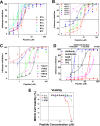
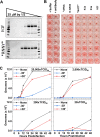


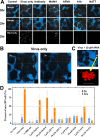
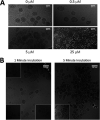
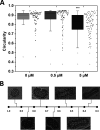
Similar articles
-
Broad-spectrum antivirals of protoporphyrins inhibit the entry of highly pathogenic emerging viruses.Bioorg Chem. 2021 Feb;107:104619. doi: 10.1016/j.bioorg.2020.104619. Epub 2021 Jan 5. Bioorg Chem. 2021. PMID: 33450541 Free PMC article.
-
5-(Perylen-3-yl)ethynyl-arabino-uridine (aUY11), an arabino-based rigid amphipathic fusion inhibitor, targets virion envelope lipids to inhibit fusion of influenza virus, hepatitis C virus, and other enveloped viruses.J Virol. 2013 Apr;87(7):3640-54. doi: 10.1128/JVI.02882-12. Epub 2013 Jan 2. J Virol. 2013. PMID: 23283943 Free PMC article.
-
Identification of Clotrimazole Derivatives as Specific Inhibitors of Arenavirus Fusion.J Virol. 2019 Mar 5;93(6):e01744-18. doi: 10.1128/JVI.01744-18. Print 2019 Mar 15. J Virol. 2019. PMID: 30626681 Free PMC article.
-
Peptide entry inhibitors of enveloped viruses: the importance of interfacial hydrophobicity.Biochim Biophys Acta. 2014 Sep;1838(9):2180-97. doi: 10.1016/j.bbamem.2014.04.015. Epub 2014 Apr 26. Biochim Biophys Acta. 2014. PMID: 24780375 Free PMC article. Review.
-
Viral Envelope Membrane: A Special Entry Pathway and a Promising Drug Target.Curr Med Chem. 2021 Oct 27;28(34):6957-6976. doi: 10.2174/0929867328666210218182203. Curr Med Chem. 2021. PMID: 33602071 Review.
Cited by
-
In Vitro Profiling of the Antiviral Peptide TAT-I24.Int J Mol Sci. 2024 Sep 28;25(19):10463. doi: 10.3390/ijms251910463. Int J Mol Sci. 2024. PMID: 39408791 Free PMC article.
-
Amphiphilic Gold Nanoparticles: A Biomimetic Tool to Gain Mechanistic Insights into Peptide-Lipid Interactions.Membranes (Basel). 2022 Jun 29;12(7):673. doi: 10.3390/membranes12070673. Membranes (Basel). 2022. PMID: 35877876 Free PMC article. Review.
-
Natural antimicrobial peptides as a source of new antiviral agents.J Gen Virol. 2021 Sep;102(9):001661. doi: 10.1099/jgv.0.001661. J Gen Virol. 2021. PMID: 34554085 Free PMC article. Review.
-
Antiviral Effect of Microalgae Phaeodactylum tricornutum Protein Hydrolysates against Dengue Virus Serotype 2.Mar Drugs. 2024 Aug 14;22(8):369. doi: 10.3390/md22080369. Mar Drugs. 2024. PMID: 39195485 Free PMC article.
-
Human Claudin-Derived Peptides Block the Membrane Fusion Process of Zika Virus and Are Broad Flavivirus Inhibitors.Microbiol Spectr. 2022 Oct 26;10(5):e0298922. doi: 10.1128/spectrum.02989-22. Epub 2022 Aug 30. Microbiol Spectr. 2022. PMID: 36040168 Free PMC article.
References
-
- Heron M. 2019. National Vital Statistics Reports deaths: leading causes for 2017. Natl Vital Stat Rep 68:1–77. - PubMed
-
- Murphy SL, Xu J, Kochanek KD, Arias E. 2018. Mortality in the United States, 2017. NCHS Data Brief 2018(328):1–8. - PubMed
-
- Johnson NB, Hayes LD, Brown K, Hoo EC, Ethier KA, Centers for Disease Control and Prevention. 2014. CDC National Health Report: leading causes of morbidity and mortality and associated behavioral risk and protective factors—United States, 2005–2013. MMWR Suppl 63:3–27. - PubMed
Publication types
MeSH terms
Substances
Grants and funding
LinkOut - more resources
Full Text Sources
Other Literature Sources

